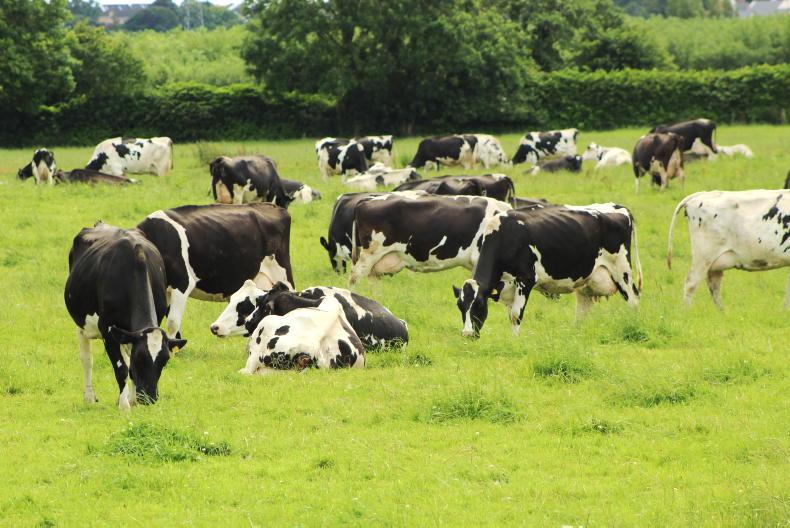Grass supplies: Grass supplies and growth rates continue to vary significantly between regions and farms. The Blackwater and eastern catchments continue to suffer reduced growth rates.
In many cases, farmers have no option but to supplement with forage. It’s not ideal but needs must and you want to keep the option of maximising August and September growth rates, which means longer rotations to allow grass grow grass.
On the Irish Grassland Association walk, Twomey’s farm near Ballyhooley in north Cork had received adequate rain, and the 12kg of dry matter that had been going in to supplement the herd was being reduced to 5kg per cow.
Keep walking and measuring to track growth rates as they recover. The Twomeys were back up to 180kg/cow from 127/cow cover when it was at its lowest.
TB stats: As everyone knows, incidence of TB is on the rise and more and more herds are getting infected. It’s a huge issue and one that is going to be hanging over all farmers until it is brought under control.
Listening to conversations over the last few months, there continues to be some confusion over the whole process.
If the skin test is carried out properly, it is extremely accurate at identifying cows with a TB infection. The rate of false positives is extremely low, meaning if 5,000 animals show up positive at the skin test, just one won’t have TB.
Even if animals don’t subsequently kill out with lesions, it doesn’t mean that they don’t have TB, it just means the infection was in the early stages and the lesions were too small to see, or they were missed at the factory.
The problem with the skin test is that it doesn’t identify all positive animals in a herd test.
It leaves around 20% of TB positive animals behind, hence the Department of Agriculture usually follows up a positive skin test with a blood test to identify positive cows remaining in the herd.
The blood test is not perfect either, as it will identify nine out of 10 positive animals, but miss one positive animal in every 10. It will also identify more false positives than the skin test, with the blood test identifying one in every 30 uninfected animals as a positive.
Soil fertility: One of the more startling messages from the Moorepark open day was that 75% of soils are deficient for one or more nutrient or has low pH.
With a lot more surplus bales taken this year, the fear is that soil fertility could worsen if the nutrients in the silage are not replaced.
Silage has a huge requirement for potash, with each tonne of dry matter removing 25kg of potash along with 4kg of phosphorus. Therefore, if a field is cut for silage and it yields four round bales of silage per acre, that’s equivalent to 1t DM per acre, meaning the field will need 4kg of P and 25kg of K to replace the offtakes in the silage.
Ideally, slurry would go back onto this ground. In a year like this where a lot of surplus paddocks have been cut, it could be worth investing in muriate of potash and spreading all low K fields with one bag/acre this autumn.






 This is a subscriber-only article
This is a subscriber-only article










SHARING OPTIONS: